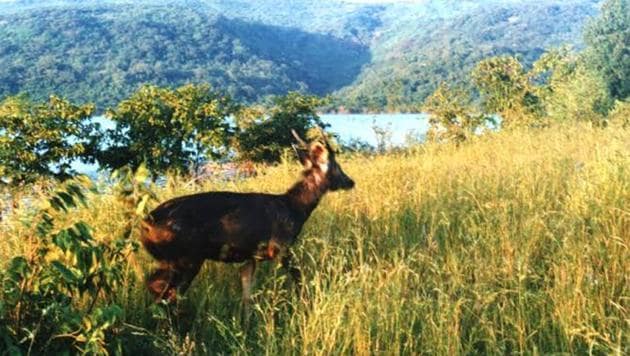Meadows, grassland pastures the size of Pune city to be developed across Maharashtra forests by 2024: Forest Minister
Over the next four years, the state plans to cover 33,200 ha (8,300 ha per year) under the Forest Meadow and Fodder Area Development Program
To reduce forest fragmentation, increased carnivore prey base, have an abundant food source for herbivores, provide zones for agriculture and animal husbandry, the state has decided to cultivate 8,300-hectare (ha) land as meadows and grasslands within forest areas in 2021.

Over the next four years, the state plans to cover 33,200 ha (8,300 ha per year) under the Forest Meadow and Fodder Area Development Program said forest minister Sanjay Rathod on Wednesday. The area is equivalent to the size of Pune city (331.2 sq km).
“This approach has different dimensions with the main idea to reduce the stress on forests. We have to consider the food chain, which is in danger due to lack of food or space for wildlife. To increase wildlife numbers, we want to ensure there is enough fodder availability for herbivores, and in turn, build good prey availability for carnivores. At the same time we have to ensure herbivores do not stray outside forests in search of food,” said Rathod, adding that for the first time in the state, such a massive forest meadow and fodder area development program was being done.
Grassland patches in Maharashtra are found across Marathwada, Vidarbha, Solapur, Satara and other isolated patches along the Western Ghats. According to the Forest Survey of India, permanent pastures, grazing lands, and fallow land account for just 8% of the state’s geographical area. However, there is no estimation or study on how much of this falls within forest areas.
Chief Minister Uddhav Thackeray on August 7 during the 15th meeting of the State Board of Wildlife (SBWL) had instructed the implementation of the scheme to increase wildlife in Maharashtra.
According to a survey conducted by the Department of Land Resources under the Ministry of Rural Development with the help from the National Sensitivity System, Maharashtra has a total geographical area of 3.07 lakh square kilometres, of which 61,579 sq. km is recorded forest area while 53,484 sq. km is fallow land (17%). “The Maharashtra government has reserved 2,000 sq. km or 2 lakh ha for meadow and fodder grazing area development in the state over the next 10 years,” said Rathod further explaining that the scheme would benefit large areas of the state that are drought-prone and aid animal husbandry through the availability of fodder for livestock and overall livelihood of tribal farmers. “Due to intense cattle grazing in forest and non-forest areas, some zones have become barren and unproductive. Grasslands will not only be useful for cattle and herbivores but also water and soil conservation. It will provide further protection to large biodiversity within and outside forest areas,” said Rathod.
While Rs. 50 crore has been earmarked for 2021 under the program by the Maharashtra wing of the Centre’s Compensatory Afforestation Fund Management and Planning Authority (CAMPA), ₹200 crore has been allocated for the next four years (Rs.50 crore per year).
Shailesh Tembhurnikar, chief executive officer, Maharashtra CAMPA, said part of the 2021 fund had already been disbursed and nurseries for grass seed collection would start from December. The scheme implementation would commence from February 2021. “We will be tackling this in phases. The first phase will be across at Yavatmal, Buldhana, Wardha, and Aurangabad followed by other zones in subsequent phases. With the availability of these grasses, there will be a fillip for dairy development across villages. This pattern will be followed after four years to reach the 2,000 sq km mark,” he said.
Nitin Kakodkar, principal chief conservator of forest (wildlife), said “Areas where villages have been rehabilitated from within forest areas and tiger reserves need to be converted into meadows. This will increase herbivore population for prey base and curtail animal movement to farmlands by minimizing forest fragmentation. These grasslands are also important habitats for migratory and resident birds.”
Independent experts said grasslands or pastures were important ecosystems of Maharashtra. “They used to be an important source of fodder grasses. Our study has shown that over the years due to constant burning and overgrazing, palatable species are replaced by unpalatable grasses leading to a decline in their fodder potential. Community protections by some groups like Vasudha and Samvedana helped establish good fodder grass in the Khandesh and Vidarbha regions,” said Dr Mandar Datar, scientist, Agharkar Research Institute, Pune.



